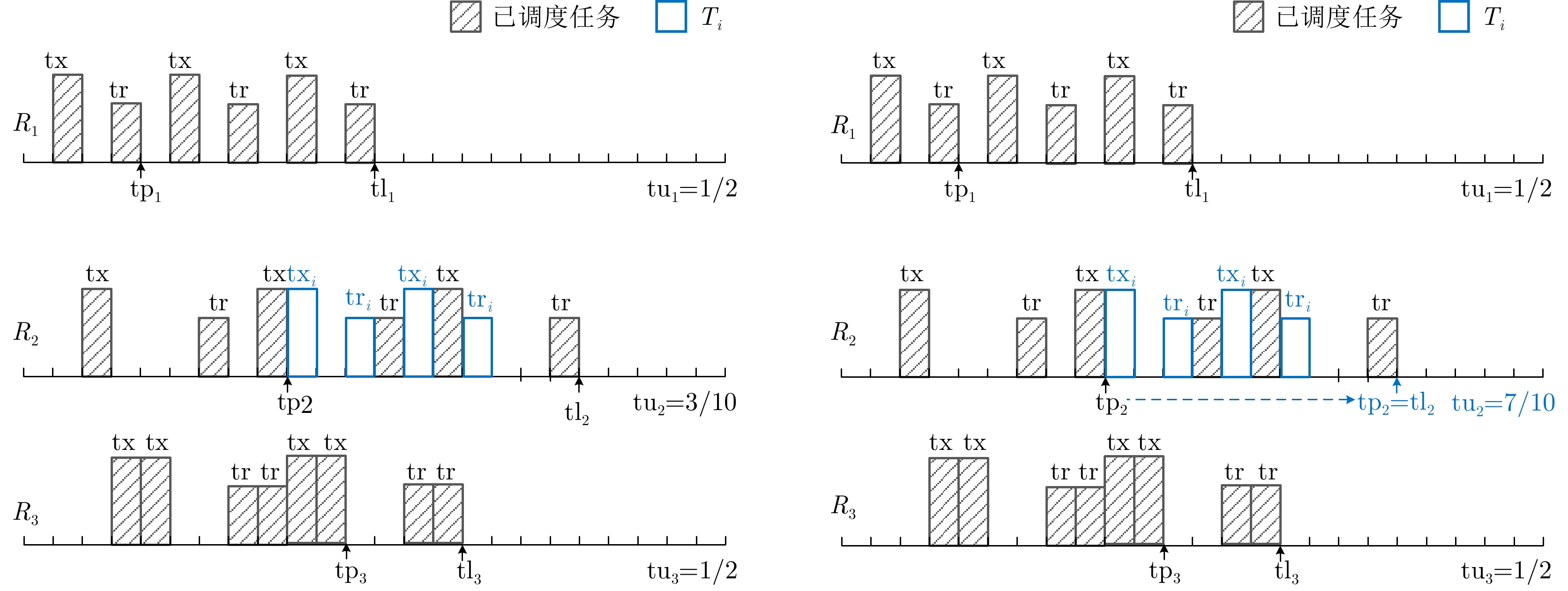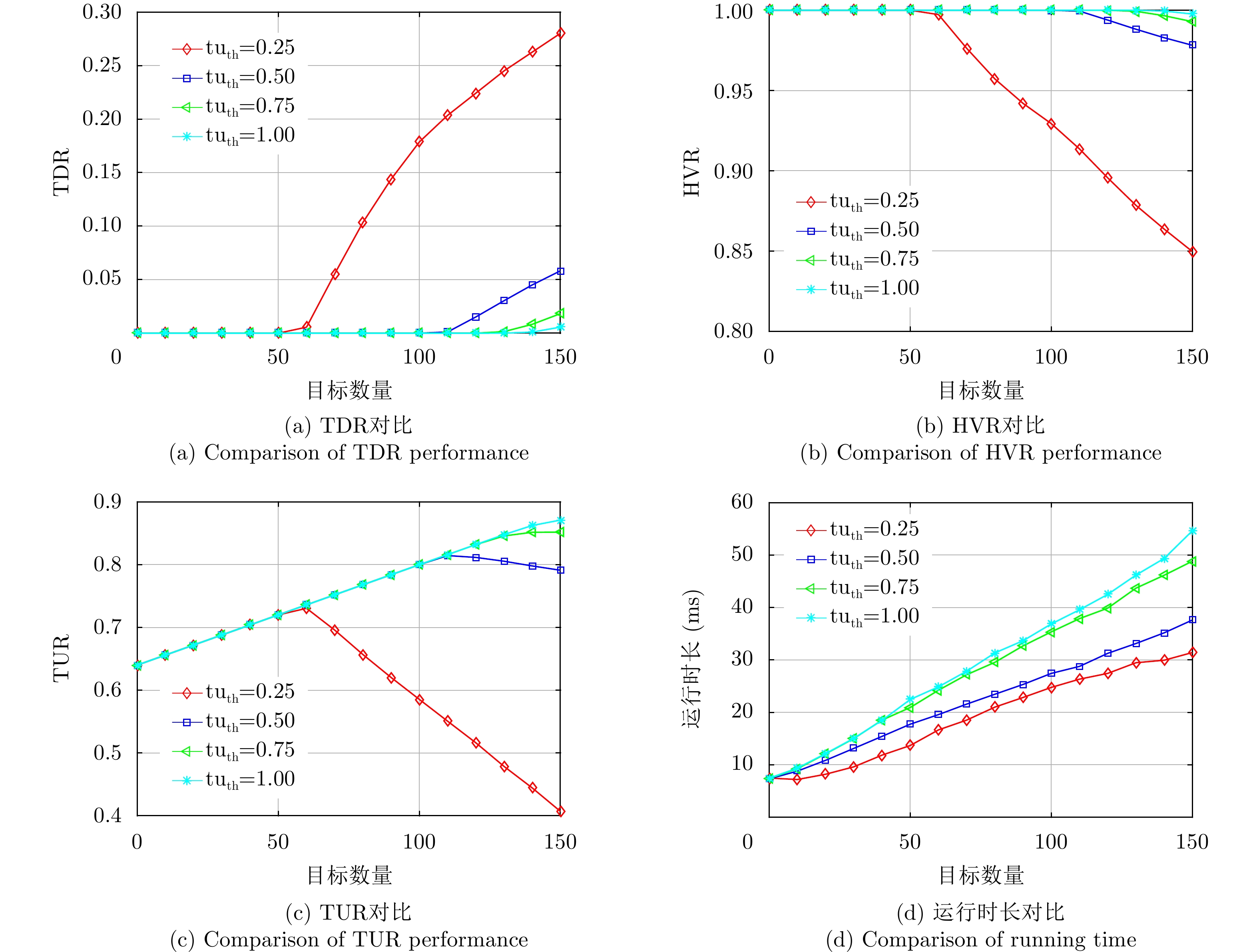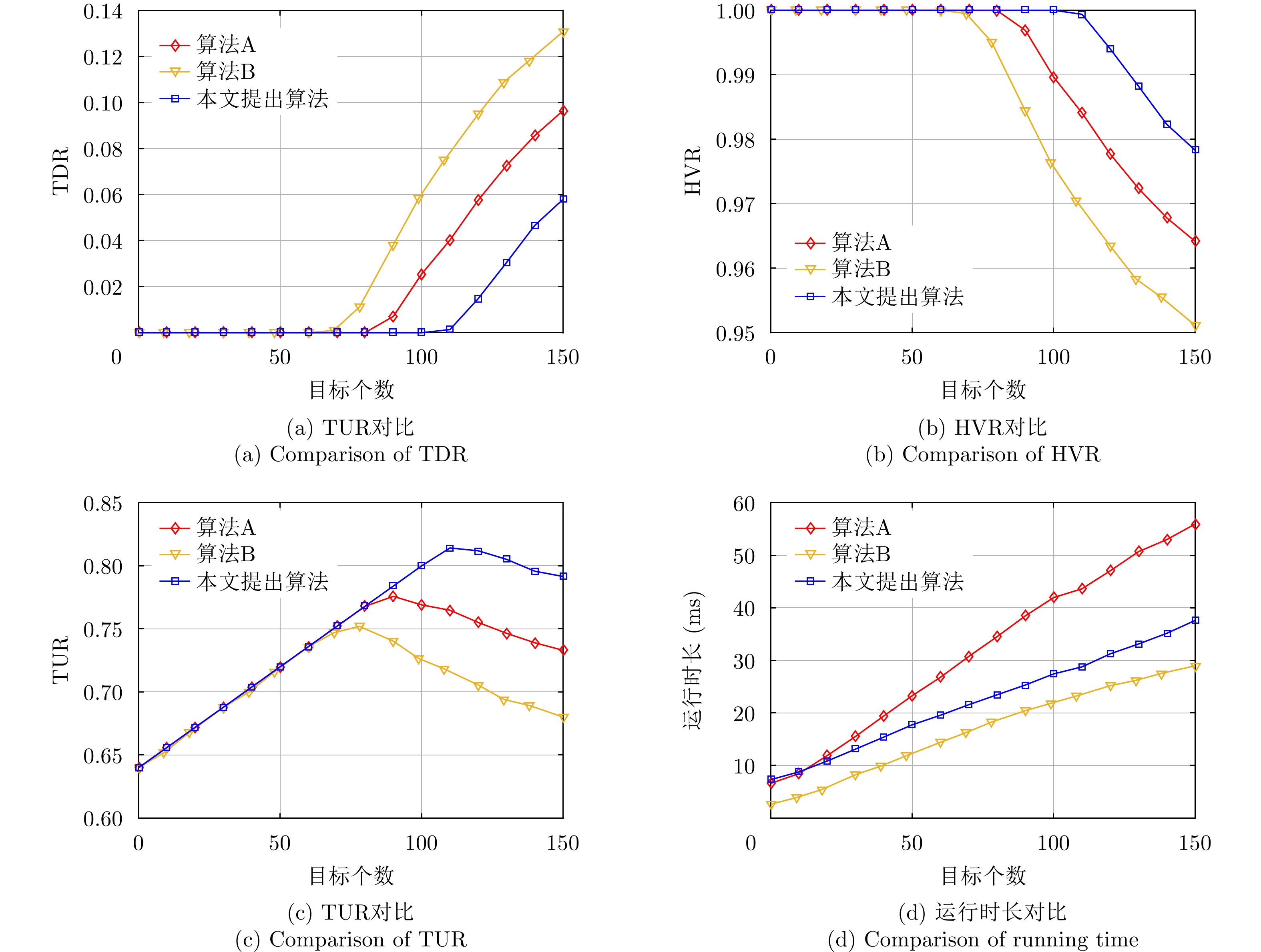| [1] |
周文辉. 相控阵雷达及组网跟踪系统资源管理技术研究[D]. [博士论文], 国防科学技术大学, 2004.
ZHOU Wenhui. Research on resource management technology for phased array radar and its network in tracking system[D]. [Ph. D. dissertation], University of Defense Technology, 2004.
|
| [2] |
YUAN Ye, YI Wei, HOSEINNEZHAD R, et al. Robust power allocation for resource-aware multi-target tracking with colocated MIMO radars[J]. IEEE Transactions on Signal Processing, 2021, 69: 443–458. doi: 10.1109/TSP.2020.3047519 |
| [3] |
YUAN Ye, YI Wei, KIRUBARAJAN T, et al. Scaled accuracy based power allocation for multi-target tracking with colocated MIMO radars[J]. Signal Processing, 2019, 158: 227–240. doi: 10.1016/j.sigpro.2019.01.014 |
| [4] |
LU Jianbin, HU Weidong, and YU Wenxian. Study on real-time task scheduling of multifunction phased array radars[J]. Acta Electronica Sinica, 2006, 34(4): 732–736. doi: 10.3321/j.issn:0372-2112.2006.04.032 |
| [5] |
ZHANG Haowei, XIE Junwei, ZONG Binfeng, et al. Dynamic priority scheduling method for the air-defence phased array radar[J]. IET Radar, Sonar & Navigation, 2017, 11(7): 1140–1146. doi: 10.1049/iet-rsn.2016.0549 |
| [6] |
QU Zhen, DING Zhen, and MOO P. Dual-side scheduling for radar resource management[C]. 21st International Radar Symposium, Warsaw, Poland, 2020: 260–263.
|
| [7] |
CHENG Ting, HE Zishu, and TANG Ting. Dwell scheduling algorithm for multifunction phased array radars based on the scheduling gain[J]. Journal of Systems Engineering and Electronics, 2008, 19(3): 479–485. doi: 10.1016/S1004-4132(08)60110-3 |
| [8] |
CHEN Yijun, ZHANG Qun, YUAN Ning, et al. An adaptive ISAR-imaging-considered task scheduling algorithm for multi-function phased array radars[J]. IEEE Transactions on Signal Processing, 2015, 63(19): 5096–5110. doi: 10.1109/TSP.2015.2449251 |
| [9] |
|
| [10] |
TAN Qianqian, CHENG Ting, and LI Xi. Online adaptive dwell scheduling based on dynamic template for PAR[J]. Journal of Systems Engineering and Electronics, 2021, 32(5): 1119–1129. doi: 10.23919/JSEE.2021.000096 |
| [11] |
CHENG Ting, LI Zhongzhu, TAN Qianqian, et al. Real-time adaptive dwell scheduling for digital array radar based on virtual dynamic template[J]. IEEE Transactions on Aerospace and Electronic Systems, 2022, 58(4): 3197–3208. doi: 10.1109/TAES.2022.3145773 |
| [12] |
YANG Shanchao, TIAN Kangsheng, and LIU Renzheng. Task scheduling algorithm based on value optimisation for anti-missile phased array radar[J]. IET Radar, Sonar & Navigation, 2019, 13(11): 1883–1889. doi: 10.1049/iet-rsn.2019.0163 |
| [13] |
MENG Fanqing and TIAN Kangsheng. Phased-array radar task scheduling method for hypersonic-glide vehicles[J]. IEEE Access, 2020, 8: 221288–221298. doi: 10.1109/ACCESS.2020.3043338 |
| [14] |
ABDELAZIZ F B and MIR H. An optimization model and tabu search heuristic for scheduling of tasks on a radar sensor[J]. IEEE Sensors Journal, 2016, 16(17): 6694–6702. doi: 10.1109/JSEN.2016.2587730 |
| [15] |
QU Zhen, DING Zhen, and MOO P. A machine learning radar scheduling method based on the EST algorithm[C]. IEEE 18th International Conference on Cognitive Informatics & Cognitive Computing, Milan, Italy, 2019: 22–27.
|
| [16] |
QU Zhen, DING Zhen, and MOO P. A machine learning task selection method for radar resource management (poster)[C]. 22th International Conference on Information Fusion, Ottawa, Canada, 2019: 1–6.
|
| [17] |
ZHANG Haowei, XIE Junwei, GE Jiaang, et al. A hybrid adaptively genetic algorithm for task scheduling problem in the phased array radar[J]. European Journal of Operational Research, 2019, 272(3): 868–878. doi: 10.1016/j.ejor.2018.07.012 |
| [18] |
ZHANG Haowei, XIE Junwei, GE Jiaang, et al. An entropy-based PSO for DAR task scheduling problem[J]. Applied Soft Computing, 2018, 73: 862–873. doi: 10.1016/j.asoc.2018.09.022 |
| [19] |
ZHANG Haowei, XIE Junwei, HU Qiyong, et al. A hybrid DPSO with levy flight for scheduling MIMO radar tasks[J]. Applied Soft Computing, 2018, 71: 242–254. doi: 10.1016/j.asoc.2018.06.028 |
| [20] |
SHAGHAGHI M and ADVE R S. Task selection and scheduling in multifunction multichannel radars[C]. IEEE Radar Conference, Seattle, USA, 2017: 969–974.
|
| [21] |
SHAGHAGHI M and ADVE R S. Machine learning based cognitive radar resource management[C]. IEEE Radar Conference, Oklahoma City, USA, 2018: 1433–1438.
|
| [22] |
SHAGHAGHI M, ADVE R S, and DING Zhen. Multifunction cognitive radar task scheduling using Monte Carlo tree search and policy networks[J]. IET Radar, Sonar & Navigation, 2018, 12(12): 1437–1447. doi: 10.1049/iet-rsn.2018.5276 |
| [23] |
TIAN Tuanwei, ZHANG Tianxian, and KONG Lingjiang. Timeliness constrained task scheduling for multifunction radar network[J]. IEEE Sensors Journal, 2019, 19(2): 525–534. doi: 10.1109/JSEN.2018.2878795 |
| [24] |
LI Xueting, XU Longxiao, ZHANG Tianxian, et al. A scheduling method of generalized tasks for multifunctional radar network[C]. International Conference on Control, Automation and Information Sciences, Chengdu, China, 2019: 1–6.
|
| [25] |
XU Longxiao, ZHANG Tianxian, WANG Yuanhang, et al. Resources conversion and complementarity based tasks scheduling for multifunction radar network[C]. IEEE Radar Conference, Boston, USA, 2019: 1–5.
|
| [26] |
XU Longxiao and ZHANG Tianxian. Reinforcement learning based dynamic task scheduling for multifunction radar network[C]. IEEE Radar Conference, Florence, Italy, 2020: 1–5.
|
| [27] |
LIU Xiaowen, ZHANG Qun, CHEN Yichang, et al. Task allocation optimization for multi-target ISAR imaging in radar network[J]. IEEE Sensors Journal, 2018, 18(1): 122–132. doi: 10.1109/JSEN.2017.2771804 |
| [28] |
LIU Xiaowen, ZHANG Qun, LUO Ying, et al. ISAR imaging task allocation for multi-target in radar network based on potential game[J]. IEEE Sensors Journal, 2019, 19(23): 11192–11204. doi: 10.1109/JSEN.2019.2936423 |
| [29] |
LIU Xiaowen, ZHANG Qun, LUO Ying, et al. Radar network time scheduling for multi-target ISAR task with game theory and multiagent reinforcement learning[J]. IEEE Sensors Journal, 2021, 21(4): 4462–4473. doi: 10.1109/JSEN.2020.3029430 |




 Submit Manuscript
Submit Manuscript Peer Review
Peer Review Editor Work
Editor Work





 DownLoad:
DownLoad:




